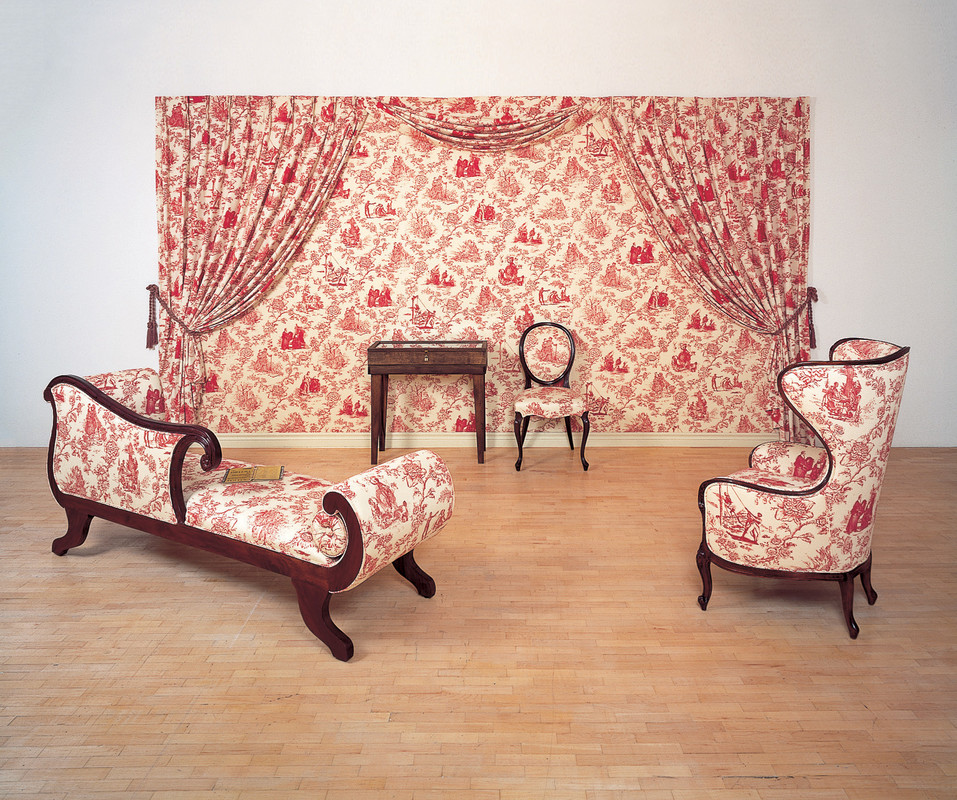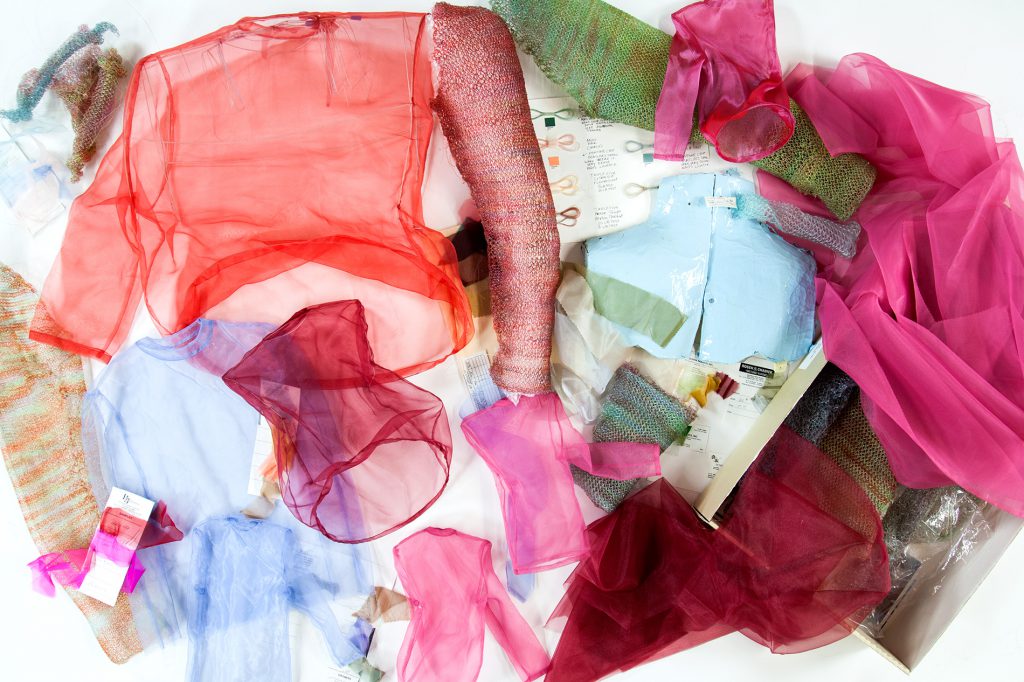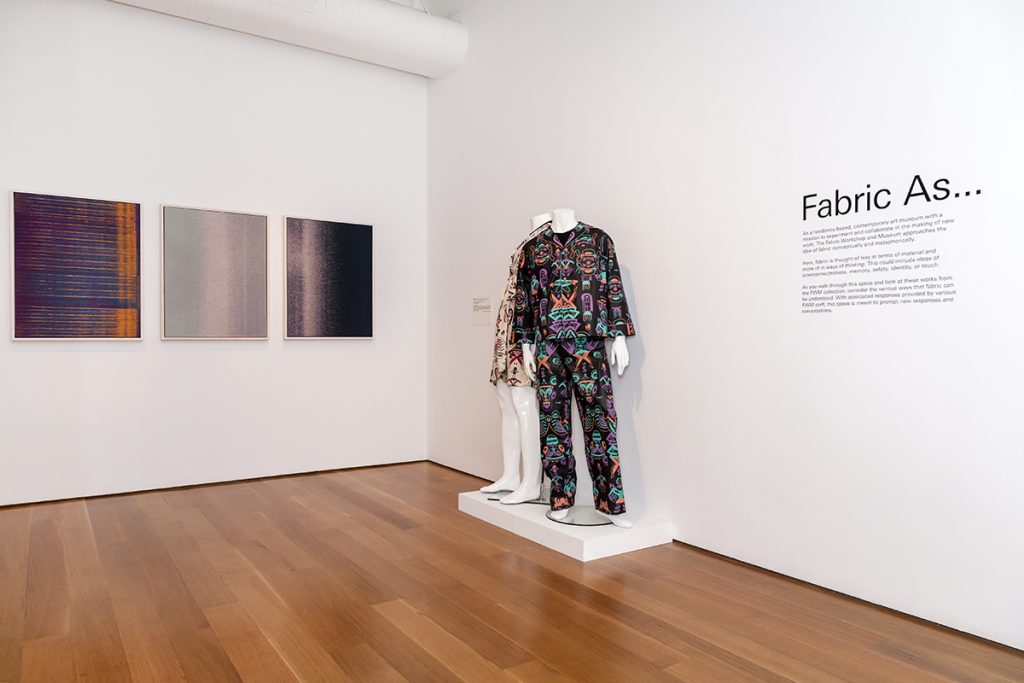In creating Mise-en-Scène: Commemorative Toile with FWM, Renée Green deftly utilized fabric and the silkscreen printing process to make a highly-charged yet surprisingly subtle commentary on social class, race, and aestheticism. Starting with a familiar historic, narrative fabric design—toile, an upholstery fabric first popularized in France in the 17th century—Green made small yet significant changes to the usual figural vignettes that characterize toile’s highly decorative patterning. Specifically, Green replaced some of the original vignettes with images she discovered in the groundbreaking book The Image of the Black in Western Art (Harvard University, 1989). The benign and bucolic scenes from the original fabric are now side by side with scenes from antebellum America and colonial Europe.
The manipulated toile was then used to upholster chairs, settees, and chaise lounges, and to make wallpaper and drapes. Arranged as a stylized parlor, the installation is reminiscent of the period rooms found in museums. Alluding to domestic comfort more than actually attaining it, the installation’s true nature is revealed in the images of the toile. Green has stated that the aim of her work is to “help people think about themselves in relation to different histories and alternative ways of seeing.” In this case, her mise-en-scène, or stage setting, is a reminder of the simultaneous realities that comprised an historic period in our collective past—one that was passed down prominently in history books and through cultural artifacts, and another that was silenced.




